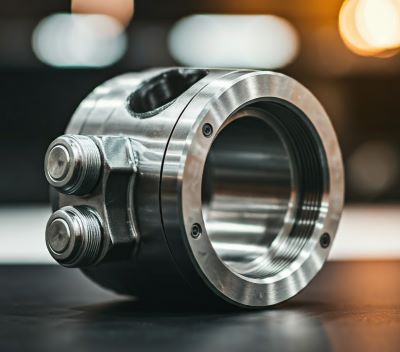Hydraulic collars are essential components in many machinery systems, playing a crucial role in maintaining fluid pressure and preventing leaks. Understanding the importance of these components and knowing how to replace them correctly is vital for ensuring the health and longevity of your equipment.
Signs Your Hydraulic Collar Needs Replacement
As with any mechanical part, hydraulic collars experience wear and tear over time. Here are some common signs indicating that a replacement is necessary:
➡️ Visible damage: Look for cracks, chips, or excessive corrosion on the collar’s surface.
➡️ Leaks: Fluid leakage around the collar is a clear sign of damage or deterioration.
➡️ Pressure loss: A noticeable drop in system pressure can be caused by a faulty collar.
➡️ Unusual noises or vibrations: These may indicate a loose or damaged collar.
Choosing the Right Replacement Hydraulic Collar
Selecting the correct replacement collar is essential to ensure proper fit and function. Consider the following factors:
➡️ Material compatibility: Choose a collar made of a material that is compatible with the hydraulic fluid and system components.
➡️ Pressure rating: The collar must be rated for the maximum pressure your system operates at.
➡️ OEM vs. aftermarket: While OEM collars offer guaranteed quality, aftermarket options can be more cost-effective.
Step-by-Step Guide to Hydraulic Collar Replacement
1. Preparation: Gather the necessary tools, including wrenches, pliers, and a clean cloth. Ensure the system is powered off and depressurized.
2. Removal: Carefully remove the old collar, taking care not to damage the surrounding components.
3. Installation: Clean the mating surfaces and apply a suitable lubricant. Install the new collar, ensuring it is properly aligned and tightened to the specified torque.
Common Mistakes to Avoid During Hydraulic Collar Replacement
➡️ Over-tightening or under-tightening: Both can lead to damage or leaks.
➡️ Incorrect lubrication: Using the wrong type of lubricant can compromise the seal.
➡️ Improper alignment: Misaligned collars can cause premature wear and leaks.
Testing and Inspecting the New Hydraulic Collar
After installation, perform the following checks:
➡️ Leak test: Visually inspect for any signs of fluid leakage.
➡️ Pressure test: Use a pressure gauge to verify that the system can maintain pressure.
➡️ Monitor performance: Keep an eye on the collar’s performance over time to detect any potential issues.
Maintenance Tips to Extend the Life of Your Hydraulic Collar
➡️ Regular inspections: Visually inspect the collar for signs of wear or damage.
➡️ Lubrication: Apply a suitable lubricant to the collar to prevent corrosion and friction.
➡️ Cleaning: Keep the collar and surrounding area clean to remove debris and contaminants.
Visit these other resources for your gain ⬇️⬇️⬇️
Hydraulic Line Plugs That Ensure a Secure Seal Every Time
Why 1 1/4 Hydraulic Hose Fittings Matter for Durability
When to Call a Professional for Hydraulic Collar Replacement
In complex systems or high-pressure environments, it’s best to consult a qualified hydraulic technician. They have the expertise to diagnose issues, select the right replacement parts, and perform the replacement safely and efficiently.
Conclusion
Proper hydraulic collar replacement is essential for maintaining the efficiency and reliability of your machinery. By following these guidelines and seeking professional help when needed, you can ensure the long-lasting performance of your hydraulic system.
Post time: Oct-25-2024


